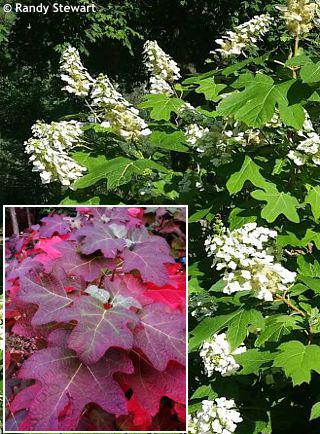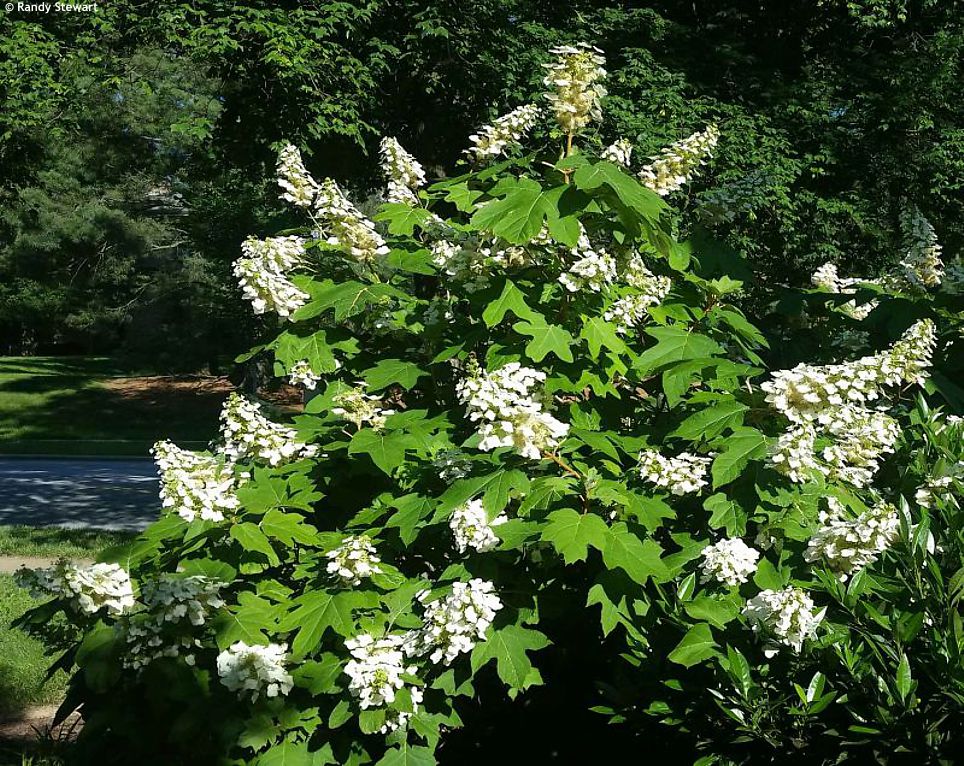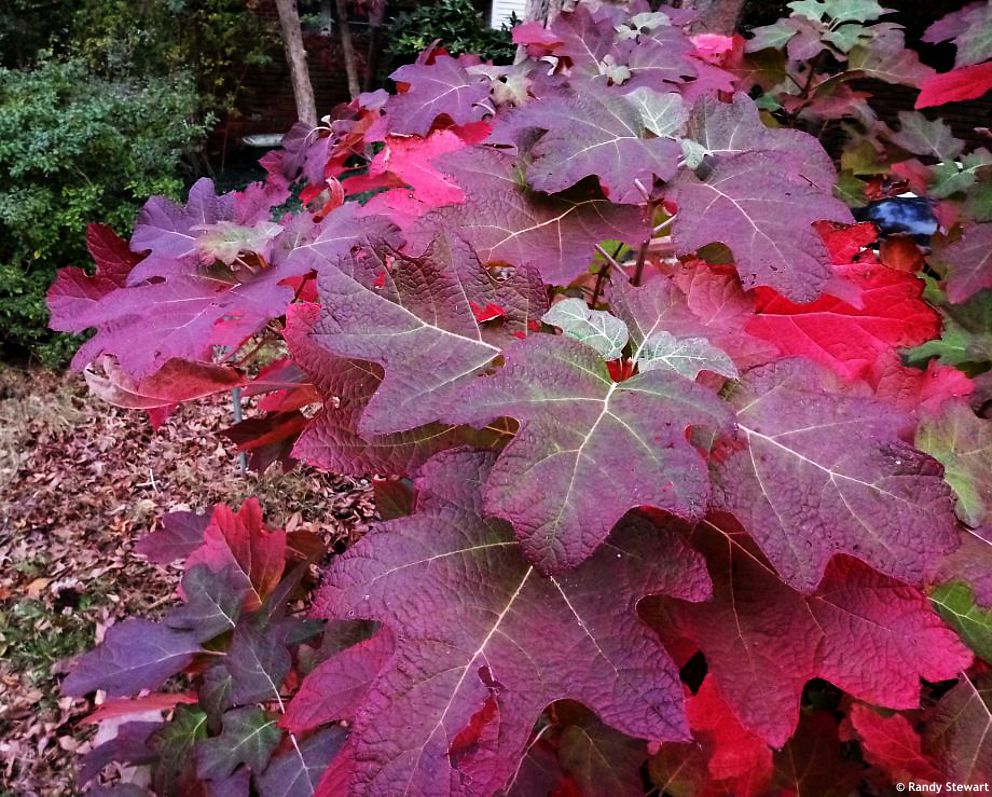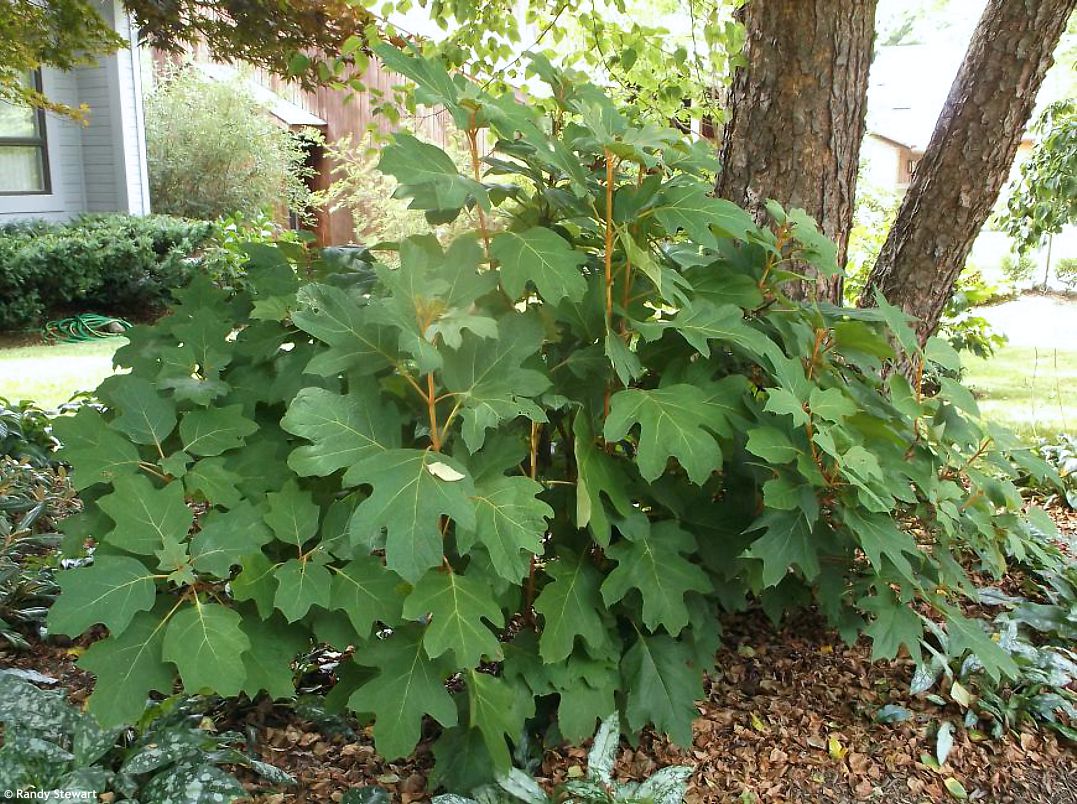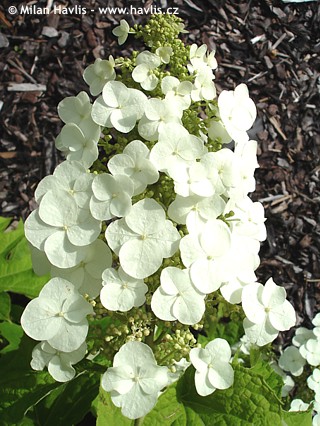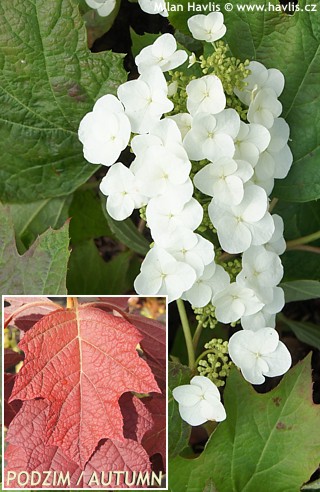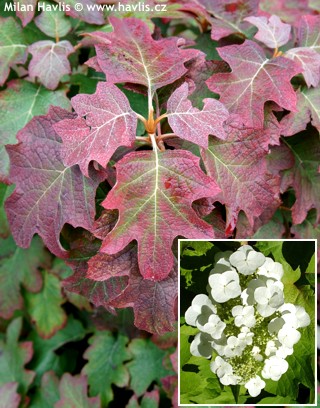Hydrangea quercifolia SNOW QUEEN ('Flemygea') oak-leaved hydrangea


Snow Queen is an oak-leaved hydrangea from Princeton in New Jersey, USA. It was bred and introduced by nurseryman William Flemmer III in 1979. It was distinct from the species by its large flowers of pure white colour and somewhat more upright habit. It was patented under PP4,458 and may not be reproduced without license.
Snow Queen oak-leaved hydrangea produces very large 20-25 cm long and 10-12 cm wide panicles, composed of 50-60 individual flowers, most of which are sterile making the inflorescence look full and compact (fertile flowers are not showy). They come out in mid June and last for as long as 6 weeks. After that they do not usually fade out but take on pink shades which develop into slightly deeper purple red shades towards the autumn.
The leaves are deciduous, soft green as they emerge and deep green when mature, beautifully lobed like oak leaves, and turning vibrant shades of carmine red and deep burgundy red in autumn. The shrub is constructed from strong, upright branches which hold the flowers always in upright position in full bloom. They get pendent only in late summer when changing the colour to pink. It keeps a compact shape and remains bushy without pruning. Still, if you need to prune or shape the plant do so immediately after flowering because it flowers on last year’s wood.
Oak-leaved hydrangea comes from moist and sometimes partly wet sites along river banks and streams, therefore it will need similar conditions in the garden. Grow it in constantly moist soil in full sun or part shade, it can even take temporary waterlogging. It is not fussy about soil pH or quality – it will grow even in clay and compacted ground, but more slowly. It is fully hardy to about -27°C (USDA zone 5b).
Last update: 22-02-2012
Goods are shipped all over Europe. For Russia and U.K. and for further details please read about SHIPPING OPTIONS HERE.
Are you interested in a serious discount for orders NOV-FEB? Check your options here.
THE PRICES INCLUDE VAT of 15%. For quick conversion you can use 1 CZK = approx. 0.04 EUR
- STANDARD QUALITY - Plants of this group are 1st class quality with number of branches and overall density adequate to their size and age, considering they were container grown.
- DE LUXE QUALITY - This label guarantees a luxurious quality of manually selected plants that, compared to their height and age, are exceptionally dense and beautiful.
- EXTRA - These plants are usually mature and bigger specimens with exceptional overall appearance.
- STANDARD (as described in the plant form) means a tree with a trunk of 190-210 cm and a crown at the top, unless specified differently. The commercial size for trees is their girth measured in the height of 1m from ground.
- HOBBY - These plants are of the same quality as our standard-quality plants but younger and therefore cheaper.
- SHRUB - a woody plant with branches growing bushy from the ground level.
- HALF-STANDARD or MINI-STANDARD - a small tree with shorter trunk, its size is usually specified.
- FEATHERED - These are trees with branches growing already from the base of the trunk and up along the stem.
- GRASSES and PERENNIALS - Sizes given usually read the diameter of the pot or the clump, as specified.

































